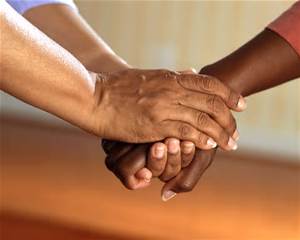Long ago, a friend of mine was diagnosed with an incurable, wasting disease. People started avoiding her. A neighbor she saw at the grocery averted his eyes and moved on. I doubt that he meant to be hurtful. More likely he didn’t know what to say, feared “getting it wrong.”
Two recent articles agree: when dealing with someone troubled or suffering, don’t try to fix the problem, just be there. In my terms, don’t try to persuade the person to think or do anything, just be there.
Tim Lawrence’s “Everything Doesn’t Happen For A Reason” takes aim at common platitudes:
I’m listening to a man tell a story. A woman he knows was in a devastating car accident; her life shattered in an instant. She now lives in a state of near-permanent pain; a paraplegic; many of her hopes stolen.
He tells of how she had been a mess before the accident, but that the tragedy had engendered positive changes in her life. That she was, as a result of this devastation, living a wonderful life.
And then he utters the words. The words that are responsible for nothing less than emotional, spiritual and psychological violence:
Everything happens for a reason. That this was something that had to happen in order for her to grow.
That’s the kind of bullshit that destroys lives. And it is categorically untrue.
Lawrence explains that this platitude prevents people from doing the one thing that will, if not fix their situation, allow them to move on as best they can. That thing is grieving. He says that, if we really want to help a person do that one thing, grieve, we should simply be there and say nothing.
Martha Beck’s article on consoling people, in the October 2015 issue of The Oprah Magazine, captures the same principle in her very title, “Being There.”
These two authors differ on what our own mental state should be when we’re there with someone who’s suffering. Lawrence says it’s OK, even desirable, to feel the person’s grief with him.
On the other hand, Beck employs an analogy, “be like water,” still water. Don’t feel guilty if we’re untroubled when someone else feels upset. On the contrary, first get yourself into an untroubled state in order to give the other person the calm environment they need.
She also differs with Lawrence in suggesting that we do speak to the other person, but not in platitudes or fixes. Rather, like still water, reflect the other person’s thoughts, statements and feelings.
Here’s a personal example. Two elderly cousins of mine, living in Galveston, experienced a flash flood within their own home in the storm surge from hurricane Ike. A day or two went by before the streets became passable and the authorities got to them.
Later, they told me about the flood, and I said, “That must have been really scary.” When my cousin replied, “Oh, it was,” he projected such a mixture of emotion, an element of, “Yes, it was really scary,” but also relief and gratitude, as if to say, “You get it. Thank you.”
Either Lawrence’s or Beck’s approach might work best in different circumstances.
When someone you care about is troubled or suffering, the important thing is to be there. If you choose to speak, avoid platitudes, simply reflect. And you might also ask the question “What would help?” featured in one of the stories my upcoming book, Love on the Rocks with a Twist: Delightful Fiction with Lessons on Dealing with Others.


Thank you, this is very timely. We have 3 close friends with serious diagnoses.
I am so glad it helped, Carol Ann. You might find it helpful to read Tim Lawrence’s complete article online and Martha Beck’s article in Oprah Magazine. If you can’t find them, contact me and I might be able to help. Best wishes for your friends.
Thank you Margaret. I get it! When Dennis died (16 days from diagnosis to death), there were way too many who offered “reasons”, how this was all for the better, how it would strengthen me, and on and on. And then there were the exceptional few who really listened, and held my hands, hugs, etc., but they offered no “reasons”. These are the friends I most highly value today. To assume that we can know the intentions of the Universe (or a god)is the pure BS.
I am glad this validated your own experience. I lost a brother who was only 23 at the time. The platitudes don’t work.